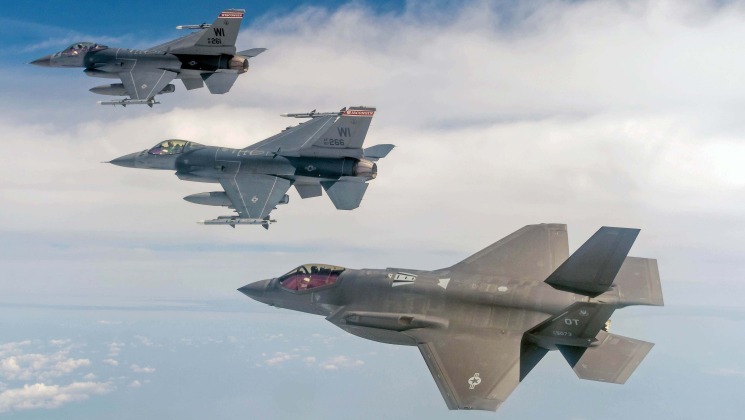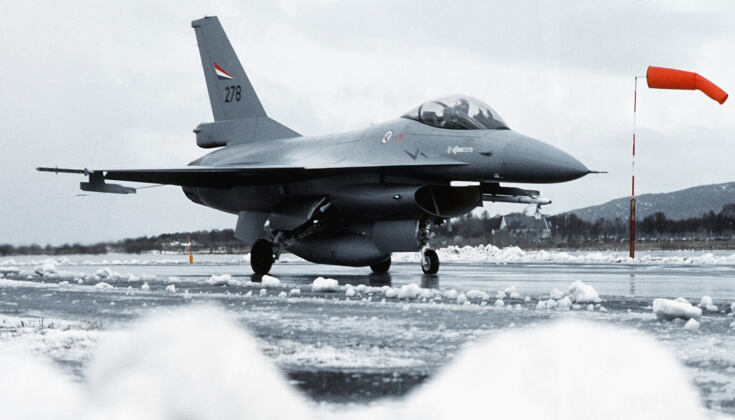Following the retirement of its last F-16 Fighting Falcon fourth generation fighters, which was announced on January 6th, Norway became the first country in the world to field a fighter fleet comprised entirely of fifth generation aircraft. The F-16’s replacement, the F-35A, is the only Western fifth generation fighter in production today, and the only one to have been offered for export. Like the F-16, it was designed for production in large numbers with lower operational and manufacturing costs to complement heavier air superiority fighters. Fifth generation fighters have been in service since December 2005, when the U.S. Air Force activated its first squadron of F-22A Raptor heavyweight jet’s, although they were not produced on a large scale until the mid-late 2010s. With the F-22 suffering from far higher operational costs than initially intended, production was cut by 75% and terminated in 2011, meaning that only 187 were produced compared to 750 F-35s by the end of 2021 and over 2000 F-35s planned in total. The F-35 is today one of just two fifth generation fighters in production and fielded at squadron level strength worldwide, alongside the Chinese J-20 which is an analogue to the F-35’s heavier counterpart the F-22 and similarly reserved for domestic use only.

Fifth generation fighters differ from their fourth generation predecessors in a number of respects. The three main initial criteria were the ability to fly supersonically for sustained periods without using afterburners, known as a supercruise capability, as well as using a very low observable stealth airframe and having enhanced manoeuvrability. While the F-22 meets all three, however, the cheaper F-35 has neither supercruise nor high manoeuvrability. Other features include a new generation of sensors, engines, data links and armaments, which the F-35 does deliver on to an even greater extent than the F-22 particularly in terms of network centric warfare capabilities. The F-35’s improved performance over the F-16 does come at a cost, however, including not only a much higher acquisition price but also significantly more taxing maintenance requirements and resulting much lower availability rates. Operational costs are also considerably higher, meaning every hour flying an F-35 will be much more expensive than an F-16 and exceed even heavier twin engine fourth generation aircraft. This complex maintenance can be a particularly serious issue in wartime when supply lines are strained, spare parts are scarce, and less time in the air leaves aircraft more at risk.

A possible danger of relying exclusively on the F-35 is that the fighter is currently limited to a basic initial operating capability, and is only expected to be considered ready for high intensity combat after 2025. The Pentagon has continued to delay certifying the fighter for full scale production due to ongoing performance issues. These issues have been a major factor in the harsh criticisms of the F-35’s performance by many U.S. officials including the two previous defence secretaries. Norway will be more reliant on foreign support particularly for air defence than before for some years due to the F-35’s lack of combat readiness. This is particularly dangerous considering that Norwegian F-35s are assigned a Quick Reaction Alert role, but may have been a factor in the decision to stop operating from Bodo Air Base above the Arctic Circle. There in an extreme climate the more complex logistics of F-35 units may have been too taxing. Once it reaches a higher level of operational readiness, however, the F-35 will provide an overall much more capable backbone to the Royal Norwegian Air Force than the F-16, and due to the scale of the program will continue to receive considerable upgrades for years to come affecting most areas of performance.
Norway has notably been a priority client for and partner in both the F-16 and the F-35 fighter programs, having first received F-16s from 1980 just two years after the U.S. Air Force and received F-35s the same year as the U.S. Air Force in 2015. The country’s transition to a purely fifth generation fleet was largely facilitated by this relationship as well as by the small size of its fighter inventory which meant numbers of F-35s needed to fill all units were small. It remains uncertain which country will be the next to field a fully fifth generation fleet, with this no longer considered a realistic prospect for the United States but potentially for the smaller fleets of Belgium, Switzerland and Finland which all field small numbers of fourth generation fighters that are set to be replaced by F-35s.
